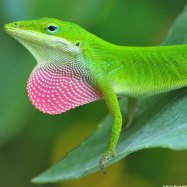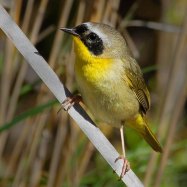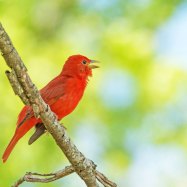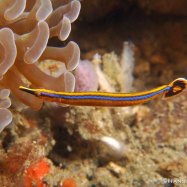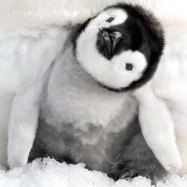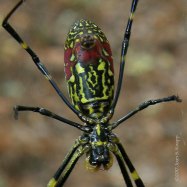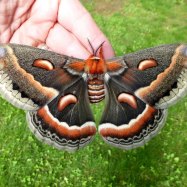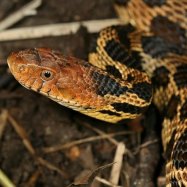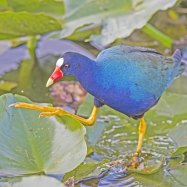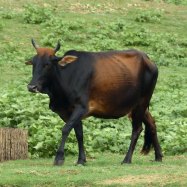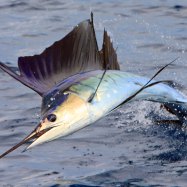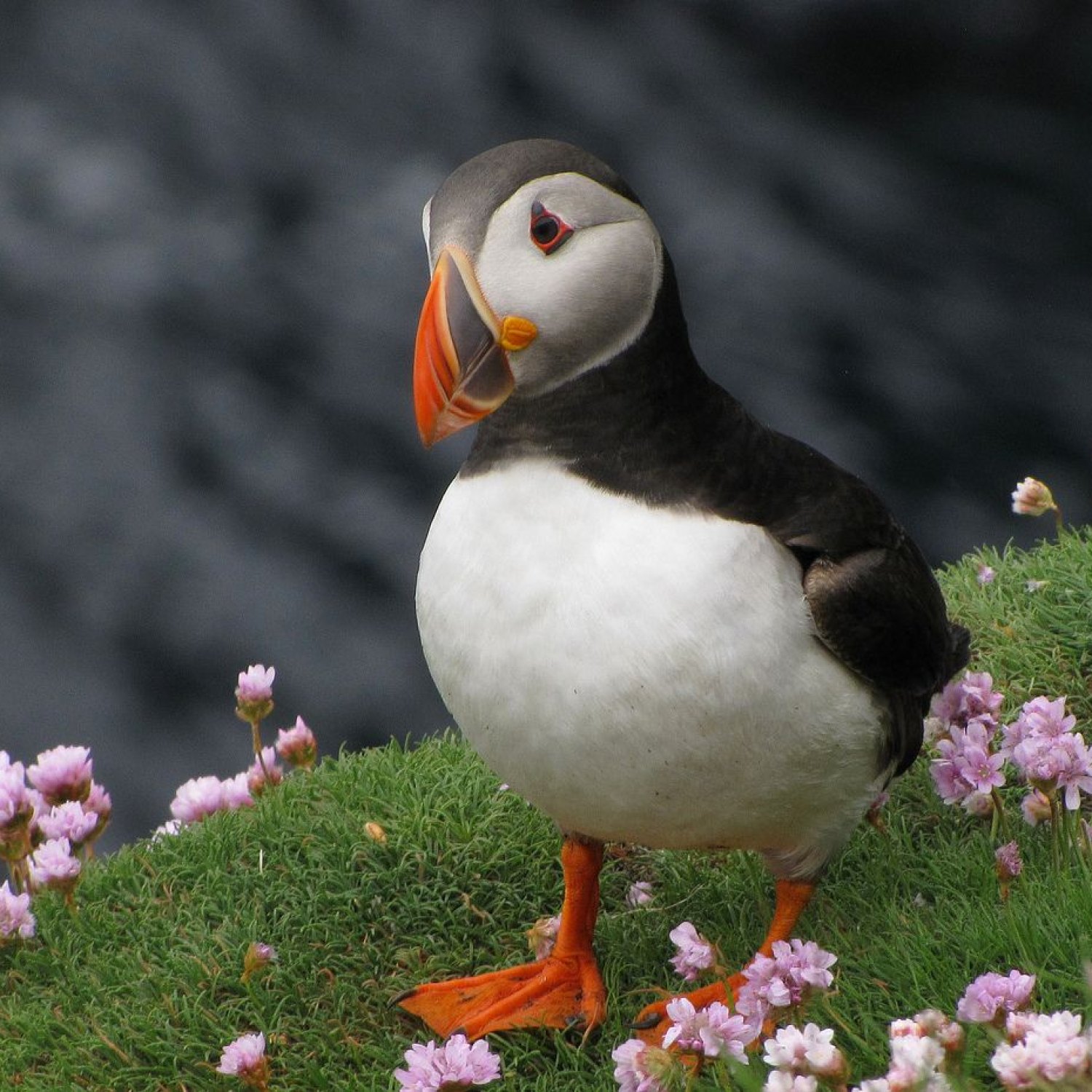
Puffin
25-30 cm (10-12 inches)
Puffins, also known as the 'clowns of the sea', are small seabirds with a stocky body shape and colorful beaks. They can be found along the Northern Atlantic coastline, in places like Iceland and Canada. With a length of 25-30 cm, these adorable creatures are a must-see for any bird enthusiast. #Puffins #BirdWatching #Nature
Animal Details Summary:
Common Name: Atlantic Puffin
Kingdom: Animalia
Habitat: Coastal cliffs, islands
Captivating the Skies and Seas: The Atlantic Puffin
The Atlantic Puffin, also known as Fratercula arctica, is a fascinating and unique seabird that captures the hearts and minds of many. These small, black and white birds are known for their adorable appearance, colorful beaks, and incredible flying and diving abilities. But there is more to this tiny creature than meets the eye.In this article, we will explore the world of the Atlantic Puffin, from its scientific classification to its various habitats and unique characteristics Puffin. So, let's embark on a journey to discover the amazing world of one of the most beloved seabirds - the puffin.
Classification
The Atlantic Puffin belongs to the animal kingdom, known as Animalia. It is further classified into the phylum Chordata, which includes animals with a spinal cord. The puffin is then classified under the class Aves, or birds, and the order Charadriiformes, which includes shorebirds, gulls, and auks. The family it belongs to is Alcidae, which consists of seabirds with webbed feet.
With its scientific name Fratercula arctica, the Atlantic Puffin shares its genus with two other species, the Horned Puffin and the Tufted Puffin.
Habitat and Distribution
The Atlantic Puffin's natural habitat is along the coastal cliffs and islands of the North Atlantic Ocean. These birds can be found in various countries in Europe and North America, making it one of the most widely distributed seabird species in the world. They can be seen in countries such as Iceland, the Faroe Islands, Greenland, Norway, Canada, and the United States Panther.
The puffins prefer to live in colonies and often return to the same breeding grounds each year. Their breeding colonies can range from a few dozen pairs to thousands, creating a spectacular sight for bird lovers and researchers alike.
Feeding Behavior
As carnivorous birds, the Atlantic Puffins primarily feed on fish such as herring, hake, and sand eels. They are also known to eat squid, crustaceans, and other small marine creatures.
The puffins use their unique hunting technique to catch fish, known as "treading water." They swim on the surface and use their wings to propel themselves underwater, catching fish with their colorful beak and sharp talons. This feeding behavior makes puffins efficient and successful hunters in the water.
Physical Characteristics
The Atlantic Puffin has a compact and stocky body, measuring 25-30 cm (10-12 inches) in length. Its unique black and white coloring makes it easily recognizable. However, the coloration of puffins varies depending on their age and breeding season.
During the breeding season, puffins' bills display bright orange, red, and yellow colors, making them stand out among other seabirds. These colors play a crucial role in courtship and mate selection. Interestingly, the puffins' beak color fades to a dull grey after the breeding season ends.
The puffins also have specialized features that aid in their diving and swimming abilities, such as their small and dense feathers, making them more buoyant in the water. They also have webbed feet, perfect for paddling and maneuvering through the water.
Behavior and Adaptations
Atlantic Puffins have several unique adaptations that have helped them thrive in their oceanic habitat. One of their most impressive abilities is their flying and diving skills. Despite their small size, these birds can fly up to 88 kilometers per hour (55 mph) and dive underwater up to 60 meters (197 feet) to catch their prey.
Another interesting adaptation is the puffins' ability to burrow into the cliffs and soil for nesting. They use their sharp claws and beak to burrow up to 3 feet deep, creating a safe habitat for their eggs and chicks. This adaptation helps protect the puffins from predators and harsh weather conditions.
Breeding and Reproduction
Breeding season for puffins typically starts from late April to early May and lasts until mid-July. Puffins form monogamous pairs, and both males and females take part in incubating the eggs and raising the chicks.
The female puffin lays a single egg per year, and it takes 39-45 days for the egg to hatch. Once the chick is born, both parents take turns feeding and caring for the chick until it is ready to leave the burrow.
Conservation Status
Unfortunately, the Atlantic Puffin has faced several threats in recent years, leading to a decline in their population. Their main predators include larger birds, such as gulls and skuas, which prey on their eggs and chicks.
Human activities, such as overfishing, oil spills, and pollution, also pose a significant threat to the puffin's survival. The destruction of their natural habitats due to coastal development and climate change also affects the puffins' breeding and feeding grounds.
To protect this beloved seabird, various conservation efforts are in place, including regulations on fishing practices and the designation of protected areas for their breeding colonies. These efforts have helped to stabilize the puffin's population, but continued conservation is necessary to ensure their survival.
Conclusion
In conclusion, the Atlantic Puffin is a remarkable bird with many unique characteristics and adaptations that allow it to thrive in its oceanic environment. From its efficient hunting and diving skills to its adorable appearance and colorful beaks, puffins have captured the hearts of people worldwide.
While the puffin may face threats to its population, conservation efforts and increased awareness can help to protect and preserve this amazing seabird for future generations to enjoy. So, if you ever have the opportunity to see these birds in their natural habitat, take a moment to appreciate their beauty and resilience, and remember the importance of protecting our wildlife.

Puffin
Animal Details Puffin - Scientific Name: Fratercula arctica
- Category: Animals P
- Scientific Name: Fratercula arctica
- Common Name: Atlantic Puffin
- Kingdom: Animalia
- Phylum: Chordata
- Class: Aves
- Order: Charadriiformes
- Family: Alcidae
- Habitat: Coastal cliffs, islands
- Feeding Method: Carnivorous
- Geographical Distribution: North Atlantic Ocean
- Country of Origin: Various countries in Europe and North America
- Location: Northern Atlantic coastline, Iceland, Faroe Islands, Greenland, Norway, Canada, United States
- Animal Coloration: Black and white
- Body Shape: Compact and stocky
- Length: 25-30 cm (10-12 inches)
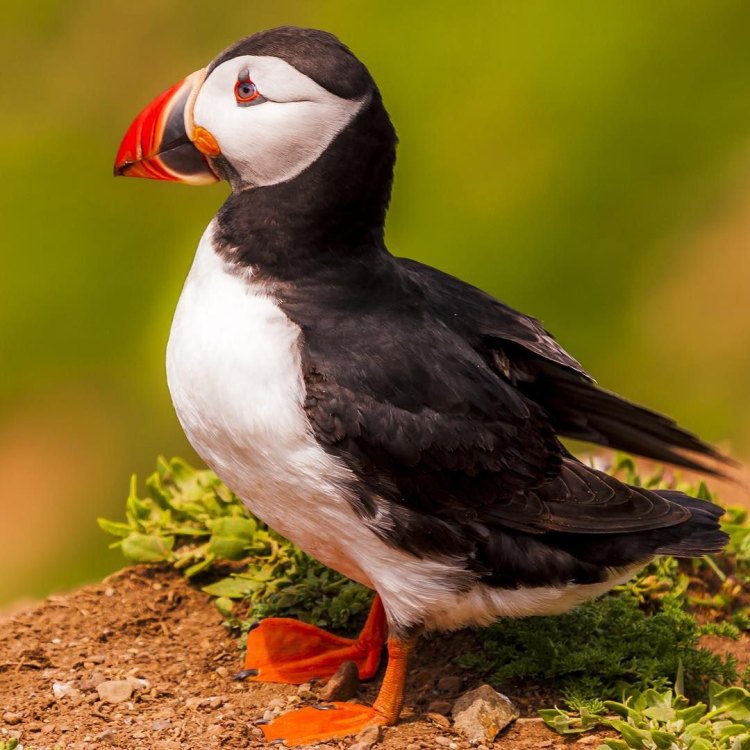
Atlantic Puffin
- Adult Size: Small to medium-sized
- Average Lifespan: 20 years
- Reproduction: Monogamous
- Reproductive Behavior: Nest in burrows or rocky crevices
- Sound or Call: High-pitched, growling, purring
- Migration Pattern: Long-distance migratory
- Social Groups: Colonial breeders
- Behavior: Excellent swimmers, agile flyers, spend most of their lives at sea
- Threats: Climate change, habitat destruction, overfishing, pollution
- Conservation Status: Least Concern
- Impact on Ecosystem: Important for marine food web
- Human Use: Tourism, birdwatching
- Distinctive Features: Brightly colored bill, white face with black markings, orange feet
- Interesting Facts: Puffins can carry multiple fish in their bills at once, they molt and change appearance in winter
- Predator: Large seabirds, gulls, mammals
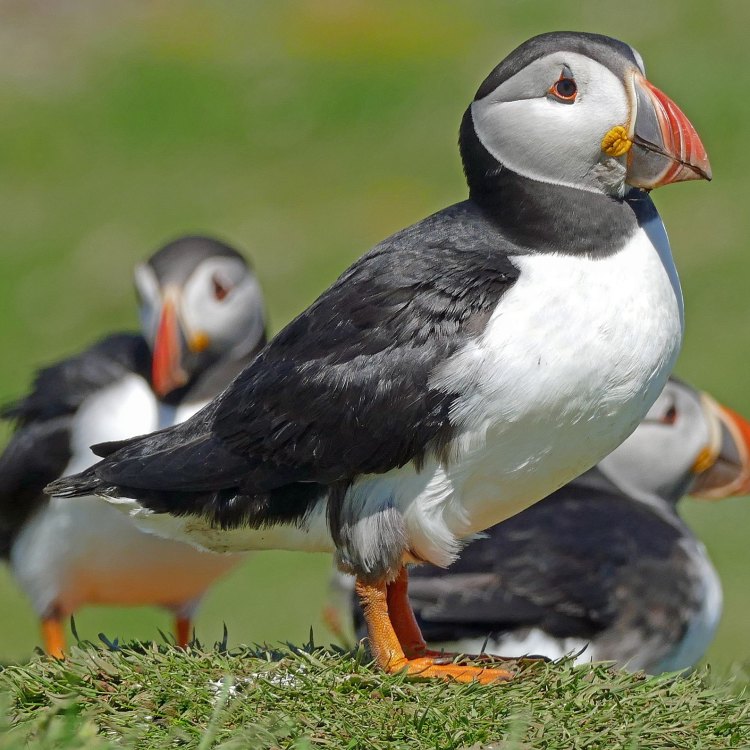
Fratercula arctica
The Puffin: A Colorful and Unique Seabird
When you think of seabirds, the first image that may come to mind is a seagull or an albatross soaring through the air. But there is another, more colorful and unique seabird that deserves our attention - the puffin.Puffins, also known as "sea parrots" or "clowns of the sea", are small to medium-sized birds that belong to the family Alcidae. They are found in the North Atlantic and North Pacific oceans, and their distinctive appearance and behaviors have captured the interest of many PeaceOfAnimals.Com.
In this article, we will delve into the world of puffins, exploring their physical features, behaviors, threats, and importance in the ecosystem.
The Physical Features of Puffins
Puffins are easily recognizable with their brightly colored bills, white faces with black markings, and orange feet. They have a compact and sturdy body, with a wingspan of approximately 25-30 inches and a weight of 1-2 pounds.Their distinctive bill, which adorns shades of red, yellow, and blue, is used for catching and carrying food. But what makes their bill even more unique is that it can change color during the breeding season. It transforms from a dull grey to a vibrant, almost fluorescent, color. This change is thought to attract potential mates and signal their reproductive status.
During the winter months, puffins molt and lose their bright colors, making them almost unrecognizable. This is also the time when they change their diet from a fish-based one to one consisting of invertebrates like crustaceans and mollusks Patas Monkey.
The Behavioral Patterns of Puffins
Puffins are monogamous and form strong pair bonds that last for many years, sometimes even for their entire lifespan. They are colonial breeders, meaning they nest in large groups on the same island or cliff edge, making for a remarkable sight.Their preferred nesting sites are burrows or rocky crevices, which they excavate with their claws and beaks. These burrows provide them with protection from predators and harsh weather conditions.
The breeding season for puffins begins in late April and lasts until August. During this time, they become noisy and territorial, often squawking and flapping their wings at any potential intruders. Males and females share the responsibility of incubating the single egg and taking turns bringing back food for their chick.
One of the most interesting behaviors of puffins is their ability to carry multiple fish in their bills at once. This is possible due to a special tongue that holds the fish in place while the puffin continues to hunt for more. They are also excellent swimmers, using their wings to propel themselves underwater to catch prey.
Although they are clumsy when it comes to taking off and landing, puffins are agile flyers, reaching speeds of up to 55 miles per hour. They spend most of their lives at sea, only returning to land during the breeding season.
The Impact of Puffins on the Ecosystem
Puffins may seem like small and insignificant birds, but they play a vital role in the marine ecosystem. As excellent hunters, they control the populations of small fish, ensuring a balance in the food web. Without puffins, there would be an increase in the number of small fish, causing a decrease in their prey, and a ripple effect on the entire ecosystem.Not only do they impact the marine ecosystem, but puffins also contribute to the terrestrial ecosystem. As they burrow in the ground, they create tunnels that other species can use for nesting and shelter.
Threats to Puffins and Conservation Efforts
The cute and iconic puffins are facing numerous threats, both natural and human-induced. Climate change, with its effects on ocean temperatures and currents, is a significant concern for these seabirds. It affects the availability of their prey and their reproductive success.Habitat destruction due to coastal development and oil spills also poses a significant threat to puffins. The introduction of invasive species, such as rats, on their breeding islands can lead to the destruction of their nests and eggs.
Overfishing is another issue that affects puffins, as it reduces the availability of their prey. Pollution, mainly from plastics, can also harm these seabirds and other marine creatures.
Fortunately, puffins are designated as "Least Concern" by the International Union for Conservation of Nature (IUCN), but that does not mean we should become complacent. Numerous conservation efforts are in place to protect these unique birds, such as limiting the number of tourists visiting their breeding grounds and implementing sustainable fishing practices.
The Human Use of Puffins
Aside from being an important part of the ecosystem, puffins also play a significant role in human culture. They have been a source of food for many indigenous communities, and their feathers and eggs have been used for various purposes.In modern times, puffins are primarily used for tourism and birdwatching. Their colorful and unique appearance attracts many visitors to their breeding grounds, making them a valuable asset to the local economy.
The Predators of Puffins
Like any other species, puffins also face threats from predators. Large seabirds, such as gulls and skuas, are known to prey on puffins, especially their eggs and chicks. Mammals like foxes and cats can also pose a threat to puffins, particularly on isolated islands where they have no natural predators.Fascinating Facts about Puffins
Puffins are full of surprises, and here are a few more fascinating facts about these remarkable seabirds:- Puffins are long-distance migratory birds, traveling all the way from their breeding grounds in the Arctic and sub-Arctic regions to spend the winter in the open ocean.
- Despite their clumsy appearance, puffins are excellent divers, capable of diving to depths of over 200 feet and staying underwater for up to a minute.
- In some cultures, puffins were believed to possess mystical powers and were considered sacred birds.
- Puffins have unique identification numbers on their bills, which helps scientists track their movements and behaviors.
- The Latin name for puffins is Fratercula, which translates to "little brother" or "friar", referencing their black and white plumage, reminiscent of a monk's robes.
In Conclusion
Puffins may be small in size, but they are big in personality and importance. Their brightly colored appearance, unique behaviors, and vital role in the ecosystem make them a beloved and fascinating species.As we continue to face threats to our planet's health, it is essential to recognize and protect these remarkable birds. Through conservation efforts and responsible tourism habits, we can ensure that puffins continue to thrive and bring their charm to our oceans for generations to come.
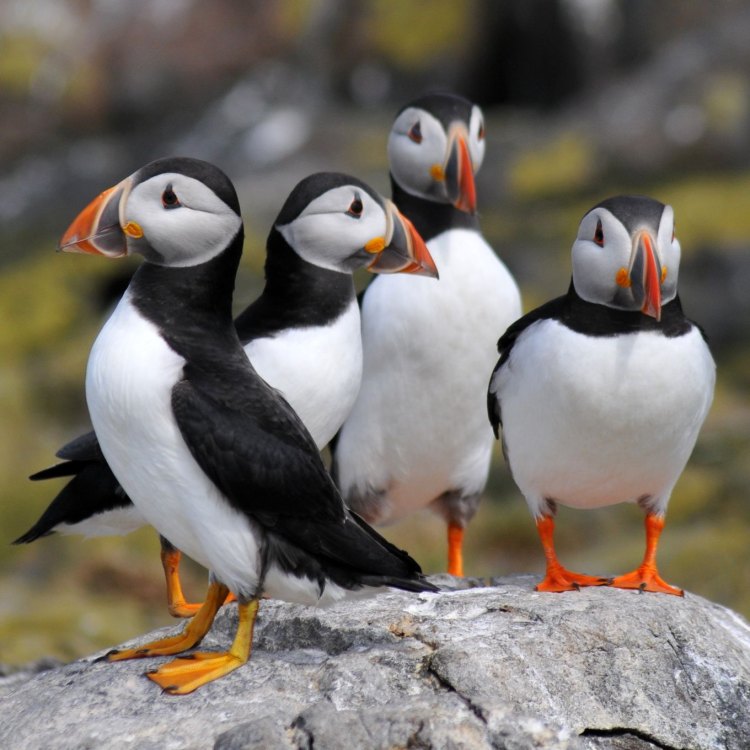
Captivating the Skies and Seas: The Atlantic Puffin
Disclaimer: The content provided is for informational purposes only. We cannot guarantee the accuracy of the information on this page 100%. All information provided here may change without prior notice.

